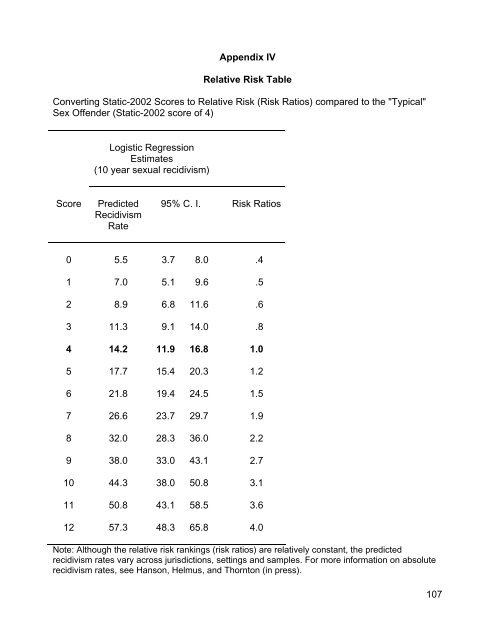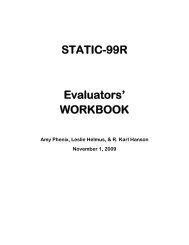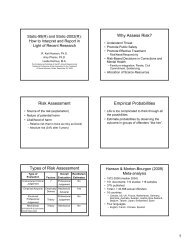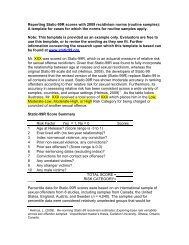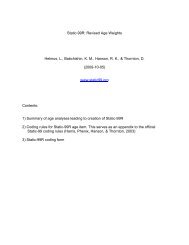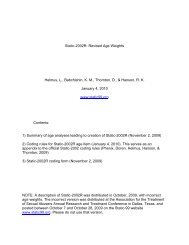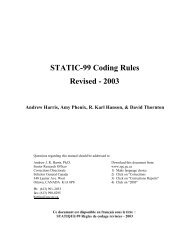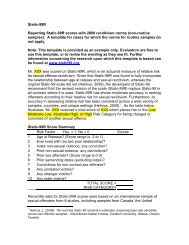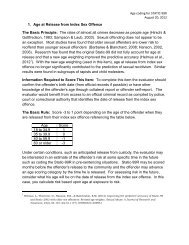Static-2002 coding rules (2009) - Static-99
Static-2002 coding rules (2009) - Static-99
Static-2002 coding rules (2009) - Static-99
You also want an ePaper? Increase the reach of your titles
YUMPU automatically turns print PDFs into web optimized ePapers that Google loves.
Appendix IV<br />
Relative Risk Table<br />
Converting <strong>Static</strong>-<strong>2002</strong> Scores to Relative Risk (Risk Ratios) compared to the "Typical"<br />
Sex Offender (<strong>Static</strong>-<strong>2002</strong> score of 4)<br />
Logistic Regression<br />
Estimates<br />
(10 year sexual recidivism)<br />
Score<br />
Predicted<br />
Recidivism<br />
Rate<br />
95% C. I. Risk Ratios<br />
0 5.5 3.7 8.0 .4<br />
1 7.0 5.1 9.6 .5<br />
2 8.9 6.8 11.6 .6<br />
3 11.3 9.1 14.0 .8<br />
4 14.2 11.9 16.8 1.0<br />
5 17.7 15.4 20.3 1.2<br />
6 21.8 19.4 24.5 1.5<br />
7 26.6 23.7 29.7 1.9<br />
8 32.0 28.3 36.0 2.2<br />
9 38.0 33.0 43.1 2.7<br />
10 44.3 38.0 50.8 3.1<br />
11 50.8 43.1 58.5 3.6<br />
12 57.3 48.3 65.8 4.0<br />
Note: Although the relative risk rankings (risk ratios) are relatively constant, the predicted<br />
recidivism rates vary across jurisdictions, settings and samples. For more information on absolute<br />
recidivism rates, see Hanson, Helmus, and Thornton (in press).<br />
107


